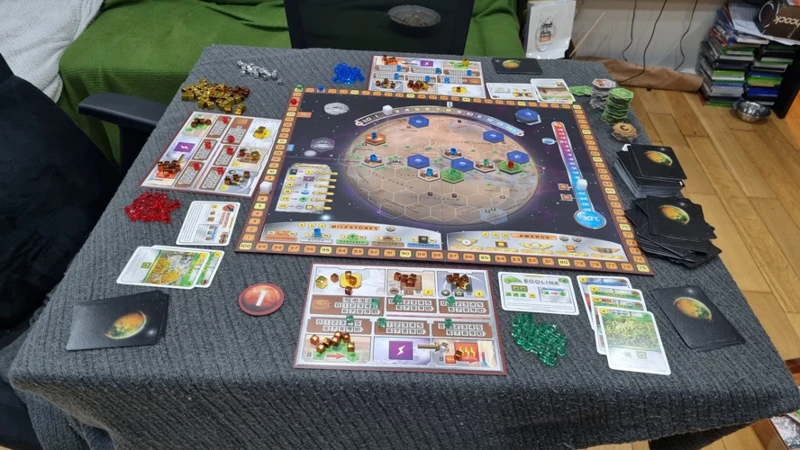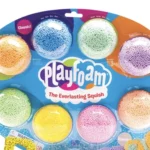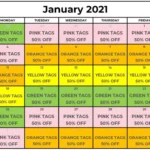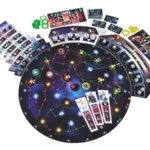Board games are a fun and engaging way to teach and learn in the classroom. They offer a unique and interactive experience that can enhance critical thinking, problem-solving, and social skills. Space board games are especially captivating as they allow players to explore the vast and mysterious universe while having a blast. In this article, we will highlight the best space board games for teachers to use in the classroom and provide tips on how to get discounts. So, buckle up and get ready for an out-of-this-world adventure!
Contents
- The Best Space Board Games for Teachers
- Discounts for Teachers
- Conclusion
-
Frequently Asked Questions
- 1. What are the benefits of using space board games in the classroom?
- 2. What age range are space board games suitable for?
- 3. How can space board games be used in the classroom?
- 4. Do I need to be an expert in space science to use these board games?
- 5. How do I incorporate space board games into my lesson plans?
- 6. What skills can students learn from playing space board games?
- 7. Can these board games be played remotely?
- 8. Are these board games expensive?
- 9. Can these board games be used in after-school programs or clubs?
- 10. What are some other benefits of using board games in the classroom?
- References
Why Use Board Games in the Classroom?
Using board games in the classroom is an excellent way to engage learners in a fun and interactive way. Not only do board games help students build social skills and promote teamwork, but they also develop critical thinking, problem-solving, and decision-making skills. Board games are also an excellent way to teach new concepts and reinforce existing ones. By using games as a teaching tool, educators can create a more positive learning environment that fosters creativity and encourages students to think outside the box. Additionally, board games offer an opportunity for students to unplug from technology and screen time, promoting a more balanced approach to learning. Finally, board games can be used to supplement traditional teaching methods, offering a more hands-on and engaging approach to learning.
Why Space Board Games?
Space board games offer a unique and captivating setting for any form of media. They provide an out-of-this-world adventure that can help students explore the cosmos in a fun and engaging way. With detailed lore and amazing artwork, space board games can immerse players in the game world and provide a memorable experience. These games blend the worlds of science fiction and tabletop gaming to deliver a fun playing experience everyone can enjoy.
In addition to being fun, space board games can also be educational. Many space-themed board games offer elements that can help players appreciate the cosmos and learn more about science. These games can help students develop critical thinking skills, problem-solving abilities, and teamwork. They can also help students learn more about the history of space exploration and the challenges that scientists and engineers face when exploring the cosmos.
Using space board games in the classroom can be a great way to engage students and make learning fun. These games can be used to teach a variety of subjects, including science, history, and geography. They can also be used to help students develop social and emotional skills, such as communication, collaboration, and empathy.
Space board games are a great way to make learning fun and engaging for students. They offer a unique and exciting setting that can captivate students and provide a memorable experience. Whether you’re a teacher looking to incorporate fun and educational games into your lessons or a student looking for a new way to explore the cosmos, space board games are a great choice.
The Best Space Board Games for Teachers

If you’re a teacher looking for a fun and educational way to teach about space, why not try incorporating space-themed board games into your lesson plans? These games not only offer an engaging and interactive way to learn about space, but they also foster critical thinking, problem-solving, and teamwork skills. Some of the best space board games for teachers include Terraforming Mars, Mission: Red Planet, Cosmic Encounter, Space Alert, Galaxy Trucker, Star Realms, Race for the Galaxy, Eclipse, Among the Stars, and Quantum. Each game offers its own unique gameplay and educational elements, so you’re sure to find one that fits your teaching style and curriculum.
1. Terraforming Mars
Terraforming Mars is a space board game that takes place in the 2400s, where humanity has expanded its reach into the galaxy. The game allows players to take on the role of a corporation tasked with terraforming the planet Mars. The goal is to make the planet habitable for humans by raising the temperature, oxygen level, and creating oceans.
Players will have to use various strategies to accomplish this task, including building cities, greenery, and other projects. Each corporation has its unique abilities and resources to help them complete their objectives. The game has high replayability due to the various combinations of cards that can be used in each playthrough.
Terraforming Mars is an excellent space board game for teachers to use in the classroom because it teaches strategy, resource management, and problem-solving skills. It can also be used to teach about the science behind terraforming and space exploration.
If you’re a teacher looking for a fun and educational space board game to use in the classroom, Terraforming Mars is an excellent choice. It’s a well-designed game that’s easy to learn but difficult to master. Plus, it’s a great way to get students interested in space science and exploration.
2. Mission: Red Planet
Mission: Red Planet is a board game that takes players on an adventure to Mars. The game is designed for 2-6 players and takes around 60-90 minutes to play. In the game, players are competing to gain the most points by sending astronauts to Mars and mining valuable resources. The game is set in the late 1800s, and players must navigate the political landscape of the time to gain an advantage.
The game is easy to learn but has a lot of depth, making it a great choice for both beginners and experienced players. It features a modular board that changes each time you play, ensuring a unique experience every time.
One of the best things about Mission: Red Planet is the artwork. The game features stunning illustrations of the Martian landscape and the astronauts who are exploring it. The attention to detail is impressive and adds to the immersion of the game.
Overall, Mission: Red Planet is a fantastic choice for anyone looking for a fun and engaging space-themed board game. Its mix of strategy and luck makes for an exciting and unpredictable experience. If you’re a teacher looking to add some excitement to your classroom, Mission: Red Planet is definitely worth considering.
| Pros | Cons |
|---|---|
| Fun and engaging gameplay | Some luck involved |
| Easy to learn | Can take a while to play |
| Stunning artwork | May not be suitable for very young children |
If you’re interested in purchasing Mission: Red Planet for your classroom, be sure to check out the discounts available to teachers. Some great resources for finding discounts include ABCmouse, Educational Insights, and Adventure Academy.
3. Cosmic Encounter
Cosmic Encounter is a classic space-themed board game that has been around since the late 1970s. It is a game of intergalactic diplomacy, negotiation, and strategy. Players take on the roles of different alien species, each with their unique abilities, and compete to establish colonies on other planets.
What makes Cosmic Encounter stand out from other space board games is its emphasis on player interaction. The game encourages players to form alliances, betray each other, and negotiate for power. With over 50 alien species to choose from, each with their unique abilities, the game offers endless replayability and variety.
For teachers looking to incorporate Cosmic Encounter into their classroom, the game can be a great way to teach negotiation skills, strategy, and critical thinking. Students can learn how to work together and form alliances to achieve common goals while also developing their own individual strategies.
Additionally, the game’s emphasis on diplomacy and negotiation can help students develop their interpersonal skills, such as effective communication, active listening, and conflict resolution.
Cosmic Encounter is a game that can be enjoyed by both students and teachers. Its classic gameplay, combined with its emphasis on player interaction and diplomacy, makes it a great addition to any classroom or game night.
If you’re interested in trying out Cosmic Encounter for yourself or with your students, check out the discounts available for teachers at is-quizlet-free or free-abc-mouse. It’s a game that is sure to provide hours of fun and learning!
4. Space Alert
Space Alert is a cooperative board game that challenges players to survive a simulated space mission. The game is played in real-time, with players having to work together to keep their spaceship safe from threats like aliens and malfunctioning equipment. Each round of the game is divided into two parts: a planning phase and a resolution phase. During the planning phase, players must coordinate their actions and assign tasks to different crew members. Then, during the resolution phase, the game’s audio CD announces different events that occur on the ship, and players must react accordingly. The game is fast-paced and requires quick thinking and communication skills to succeed. With a variety of difficulty levels and scenarios, Space Alert is a great option for teachers looking to challenge their students’ problem-solving abilities.
5. Galaxy Trucker
Galaxy Trucker is a fun and engaging board game for teachers to use in the classroom. It is a game of space exploration, where players build their own spaceships out of scrap and then fly them through the galaxy. The game is fast-paced and chaotic, with players having to react quickly to events that happen during the flight. It is a great game for teaching problem-solving skills and teamwork, as players have to work together to build their ships and navigate through space. Galaxy Trucker also has a strong educational component, as players learn about the different parts and systems that go into a spaceship. The game is suitable for players aged 14 and up, and can accommodate 2-4 players. Overall, Galaxy Trucker is a fun and educational game that teachers can use to engage their students in the classroom.
6. Star Realms
Star Realms is a deck-building game that challenges players to build powerful spaceships and battle against their opponents. It is a two-player game that takes about 20 minutes to play. The game is easy to learn, but it takes time to master the strategy.
The game starts with each player having a deck of weak ships and a few credits. Players use the credits to buy new ships and other cards to add to their deck. As the game progresses, players use their ships to attack their opponent and reduce their opponent’s authority to zero.
One of the unique features of Star Realms is the ability to play it as a standalone game or combine it with other sets to create a larger game. The game also has a variety of expansions and promo cards, which add more variety and replayability to the game.
Star Realms is a great choice for teachers who want to introduce their students to deck-building games. It is easy to learn, quick to play, and has enough depth to keep players engaged. Plus, it is a great way to teach strategy and critical thinking skills in a fun and engaging way.
If you want to try out Star Realms, you can find it on Amazon or at your local game store. And if you are a teacher looking for discounts on board games, be sure to check out websites like ABCMouse.com or Maps for Kids, which offer free or discounted resources for educators.
7. Race for the Galaxy
Race for the Galaxy is a fast-paced, strategic card game that allows players to build civilizations and explore the galaxy. Each turn, players choose an action to take, and each action taken by a player can be used by other players as well, creating a dynamic and challenging game. This game is perfect for science teachers who want to incorporate strategy and critical thinking into their lessons.
The game features a variety of cards, each with its own unique abilities and benefits. Players must carefully choose which cards to play to build their civilization and score the most points. With multiple ways to win, Race for the Galaxy provides endless replayability and can be used to teach a variety of subjects.
One of the benefits of Race for the Galaxy is that it can be played with 2-4 players, making it ideal for small groups or classroom settings. The game can also be modified to suit different skill levels, making it accessible to a wide range of students.
Overall, Race for the Galaxy is a great addition to any science classroom, providing a fun and engaging way to teach critical thinking and strategy skills. Teachers can find discounts for this game and other educational resources by checking out websites like abcmouse.com-for-free.
8. Eclipse
Eclipse is a combat and area control strategy board game that allows you to build up your civilization and conquer your opponents. The game challenges players to explore new star systems, research technologies, and build spaceships to wage war. With up to six players, games last for one to three hours, giving you and your students plenty of time to plan your strategies, according to the strengths and weaknesses of your species. The game’s potential paths to victory make it an excellent tool for teaching critical thinking and decision-making skills.
If you’re looking to add a touch of realism to your classroom, Eclipse is a great choice. The game’s top-quality components, including miniature spaceships and a beautiful game board, create an immersive experience that is sure to engage your students. Additionally, the game’s solitaire mode is perfect for students who prefer to learn at their own pace. For teachers looking to incorporate Eclipse into their curriculum, there are several online resources available, including the Eclipse Page, which provides detailed information about the game’s rules, strategies, and gameplay.
9. Among the Stars
Among the Stars is a card-drafting game that allows players to build their own space station. Each player represents one of the alien races that have joined together to form a new space station after a huge war. The goal is to build the most efficient and profitable space station by placing cards in the right locations. The cards represent different rooms and facilities, such as restaurants, labs, and power plants.
One of the unique aspects of Among the Stars is that players can attack each other and try to sabotage their stations. This adds an extra layer of strategy to the game, as players must balance building their own station with defending it against attacks. The game also includes a solo mode, which allows players to practice their skills against an AI opponent.
Among the Stars is a great game for teachers who want to teach their students about resource management and strategy. The game is suitable for players aged 10 and up and can be played with 2-4 players. The game has received positive reviews for its engaging gameplay, beautiful artwork, and replayability. If you’re looking for a fun and challenging space-themed game for your classroom, Among the Stars is definitely worth considering.
If you want to improve your writing skills, check out our Grammarly review.
10. Quantum
Quantum is a strategy game that has players in charge of their own fleet of starships. The goal of the game is to capture opposing players’ home planets while defending your own. Players use dice to determine their ships’ movements and actions, allowing for a unique experience each time the game is played. Quantum is easy to learn but difficult to master, making it a great game for both novice and experienced players. The game’s sleek design and beautiful artwork add to the immersive experience. Overall, Quantum is a challenging and engaging game that is sure to keep students entertained while also teaching them valuable skills such as strategy and critical thinking.
Discounts for Teachers
Teachers can take advantage of discounts offered by various retailers to purchase space board games for the classroom. Where to Find Discounts: Retailers such as Amazon, Barnes & Noble, and Target offer discounts on board games throughout the year. Additionally, board game companies such as Fantasy Flight Games and Rio Grande Games often have sales on their websites. How to Get Discounts: Teachers can sign up for email newsletters from these retailers and companies to stay informed about sales and discounts. They can also check websites such as RetailMeNot and Coupons.com for coupon codes. By taking advantage of these discounts, teachers can provide engaging and educational space-themed activities for their students at a lower cost.
Where to Find Discounts
Teachers can find discounts on space board games through various websites and retailers. Here are some places to look for discounts:
- Amazon: Amazon offers discounts on board games for teachers through its Amazon Prime for Education program. Teachers can sign up for a free six-month trial and receive discounts on select board games.
- Educational Supply Stores: Many educational supply stores offer discounts on board games for teachers. Check with your local store to see if they have any promotions or sales.
- Publisher Websites: Board game publishers like Fantasy Flight Games and Z-Man Games offer discounts to teachers who purchase their products directly from their websites.
- Social Media: Follow board game publishers and retailers on social media for updates on sales and promotions. Some companies, like Miniature Market, offer exclusive discounts to their social media followers.
Remember to always check for discounts before making a purchase. With a little research, teachers can save money on space board games and provide their students with fun and educational experiences.
How to Get Discounts
If you’re a teacher looking to get discounts on space board games, there are several ways to do so. Here are some tips on how to get discounts on your space board game purchases:
| Tip | Description |
|---|---|
| 1. Sign Up for Newsletters | Many board game retailers offer discounts to customers who sign up for their newsletters. These newsletters often contain information about upcoming sales and promotions, as well as new releases. |
| 2. Follow on Social Media | Following board game retailers on social media can also be a great way to stay up-to-date on sales and promotions. You may even come across exclusive discounts that are only available to social media followers. |
| 3. Check for Educator Discounts | Some board game retailers offer discounts specifically for educators. These discounts may require verification of your educator status, such as a school ID or other proof of employment. |
| 4. Shop During Sales | Board game retailers often have sales during holidays like Black Friday and Cyber Monday, as well as other times throughout the year. Keep an eye out for these sales and take advantage of the discounts offered. |
| 5. Buy in Bulk | If you’re buying board games for a classroom or for a group of students, consider buying in bulk. Many retailers offer discounts for bulk orders, which can help you save money in the long run. |
By following these tips, you can save money on your space board game purchases and add more games to your classroom or personal collection. Don’t forget to also check for any additional discounts or promotions offered by specific retailers.
Conclusion
In conclusion, space board games are a fantastic way to engage students in learning about Earth and Space Science. Incorporating board games into the classroom can help students develop critical thinking skills, improve their communication and collaboration skills, and provide a fun and interactive learning experience. Through playing games like Terraforming Mars, Mission: Red Planet, and Cosmic Encounter, students can learn about space exploration, colonization, and the challenges of living in space. Additionally, teachers can take advantage of discounts available to educators to make these games more accessible to their classrooms. By using space board games in the classroom, teachers can inspire students to explore the universe and spark a lifelong interest in space exploration. So, why not bring the excitement of space exploration to your classroom today?
Frequently Asked Questions
1. What are the benefits of using space board games in the classroom?
Space board games provide a fun and engaging way for students to learn about space and science concepts. They can also help to improve critical thinking, problem-solving, and teamwork skills.
2. What age range are space board games suitable for?
Space board games are suitable for a wide range of ages, from elementary school students to adults.
3. How can space board games be used in the classroom?
Space board games can be used to introduce new concepts, reinforce learning, or as a fun activity to reward students. They can also be used in small group settings or as a whole-class activity.
4. Do I need to be an expert in space science to use these board games?
No, you do not need to be an expert in space science to use these board games. The games are designed to be easy to understand and teach, even for those with limited knowledge of the subject matter.
5. How do I incorporate space board games into my lesson plans?
You can incorporate space board games into your lesson plans by using them as a fun way to introduce or reinforce concepts, or as a reward for good behavior or completion of work. You can also create lesson plans around specific board games to focus on certain skills or concepts.
6. What skills can students learn from playing space board games?
Students can learn a variety of skills from playing space board games, including critical thinking, problem-solving, teamwork, strategy, and communication skills.
7. Can these board games be played remotely?
Yes, many of these board games can be played remotely using online platforms or apps. This can be a great way to engage students who are learning from home or unable to come to school.
8. Are these board games expensive?
The cost of these board games can vary, but many are affordable and can be purchased for under $50. Some games also offer discounts for teachers or bulk purchases.
9. Can these board games be used in after-school programs or clubs?
Yes, these board games can be used in after-school programs or clubs to provide a fun and educational activity for students. They can also be used in community centers or libraries.
10. What are some other benefits of using board games in the classroom?
Board games can provide a fun and engaging way for students to learn, promote social skills and communication, and help to improve memory and cognitive function. They can also be used to teach cultural awareness and history.






